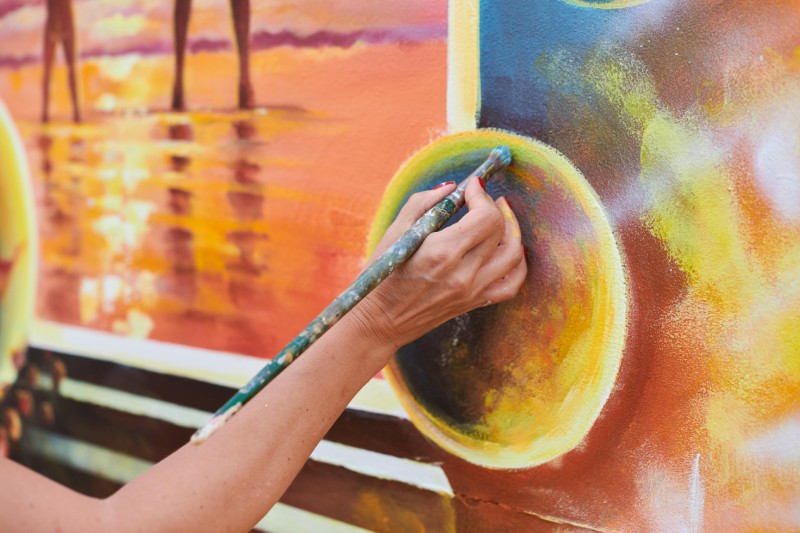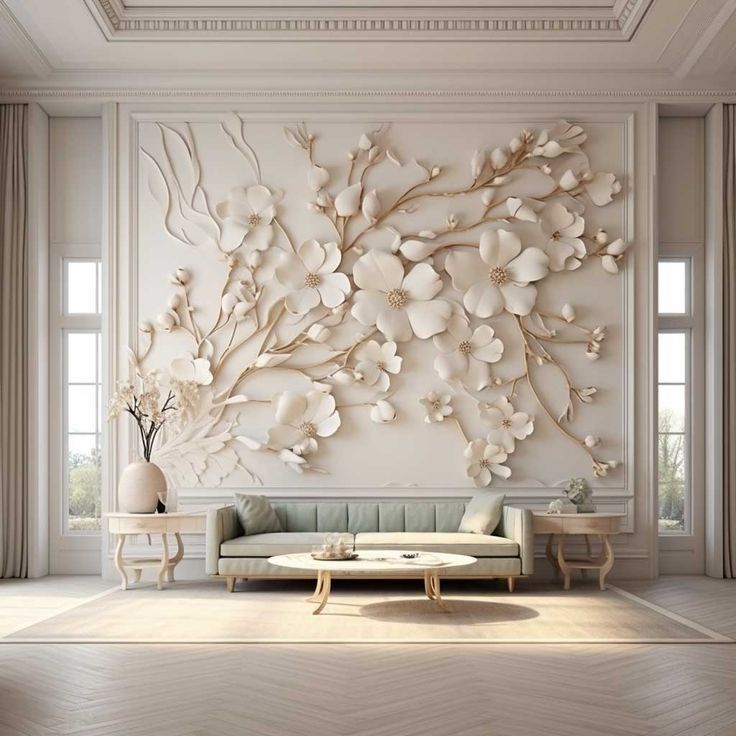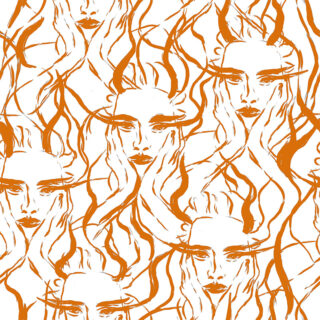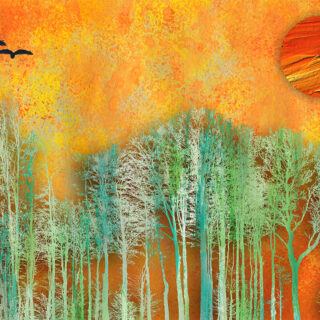Mural Meaning
A mural is a large-scale artwork that is applied or painted directly onto a wall, ceiling, or other permanent surface, often transforming ordinary architectural elements into immersive visual experiences. While historically significant and culturally symbolic, murals have also found a strong foothold in modern interior design for their ability to convey themes, emotions, and aesthetic value within indoor spaces.

Definition and Historical Context of Murals
Derived from the Latin word murus meaning wall, the term “mural” initially referred to wall paintings or decorations integrated into the surface of buildings. Murals date back to prehistoric times—examples include the cave paintings at Chauvet (France) and the tomb murals in ancient Egypt. These artworks were more than mere decorations; they conveyed religious beliefs, historical narratives, and cultural heritage.
In the 20th century, the Mexican muralism movement brought renewed attention to this medium, with artists such as Diego Rivera and David Siqueiros using public spaces to narrate social and political stories. Since then, murals have evolved not only as public art but also as personalised interior elements in homes, commercial venues, and institutional buildings.
Murals in Interior Design
In contemporary interior design, murals are used to transform rooms and establish focal points. Unlike mass-produced wallpaper or conventional framed artwork, murals are typically bespoke and aligned to the scale, purpose, and theme of the space. Designers use murals to complement furniture, highlight architectural features, or reflect the personalities of homeowners.

They may take on a variety of styles—ranging from realistic trompe-l’œil (trick of the eye) illusions to abstract, modern, or nature-inspired motifs. Murals may be hand-painted, printed digitally on canvas or vinyl, or composed of mosaic tiles. In modern homes and workplaces, murals are also appreciated for their therapeutic and emotional impact, often creating calming, inspiring, or energising environments.
Types of Murals Used Indoors
There is no one-type-fits-all, so let’s explore more options:
1. Hand-Painted Murals:
These are custom creations made directly on surfaces using brushes and paints. Artists typically use acrylic or emulsion paints for longevity and colour vibrancy.

2. Digitally Printed Murals:
Based on high-resolution photography or digital artwork, these murals are printed onto substrates such as vinyl, non-woven fabric, or canvas and then applied to the wall. This method allows for precise detailing and scalability.

3. Trompe-l’œil Murals:
A French term meaning “deceive the eye,” this technique uses perspective and shading to create illusions of depth or three-dimensionality. Common in hallways and ceilings, it can mimic windows, landscapes, or architectural features.

4. Tile and Mosaic Murals:
Particularly common in kitchens and bathrooms, these murals are made from ceramic, glass, or stone tiles arranged to form images or patterns.

5. Textured and Relief Murals:
Using materials like plaster, clay, or mixed media, these murals introduce tactile depth and are popular in hospitality and luxury home interiors.

Techniques and Materials
Murals can be applied using various traditional and modern techniques:
- Buon Fresco: A classical method where pigments are applied to wet lime plaster, allowing the artwork to bond with the surface as it dries.
- Secco Fresco: Painting done on dry plaster using a binding agent such as egg, glue, or oil.
- Stencil and Airbrush Techniques: Often used for contemporary and graffiti-style murals.
- Projection-Based Outlines: Artists may use projectors to trace complex designs accurately before painting.
The choice of material—acrylic, latex, spray paint, digital ink, or tile—depends on the environment, wall surface, desired effect, and budget.
Role and Impact in Design
In interior spaces, murals serve both aesthetic and functional purposes. They can:
- Visually expand small rooms through perspective or panoramic scenes.
- Set a mood—such as tranquility in a spa, playfulness in a child’s room, or energy in a workspace.
- Reflect cultural or personal identity through symbolic elements.
- Add colour, texture, and narrative to otherwise plain walls.
In commercial spaces like cafés, hotels, and office lobbies, murals reinforce branding and create immersive experiences. In residential settings, they help personalise spaces and establish themes in living rooms, bedrooms, or even hallways.

Significance in Contemporary Contexts
The rise of open-plan living, minimalist architecture, and neutral colour palettes has increased the demand for impactful visual elements—making murals an ideal solution. With the help of technology, murals today can be planned digitally and printed to exact dimensions, ensuring precision and ease of installation.
Moreover, as biophilic and nature-inspired design gains popularity, murals featuring landscapes, floral motifs, or natural textures are being integrated to foster emotional well-being.
Preservation and Maintenance
Most murals require periodic cleaning and minimal maintenance, especially when coated with protective sealants. In high-traffic or moisture-prone areas, murals made from waterproof materials or washable paints are preferred. Modern murals are often removable and replaceable, offering flexibility without permanence.
Conclusion
Murals in interior design combine artistic tradition with modern-day versatility. As wall-bound storytelling mediums, they enrich spaces with meaning, creativity, and visual appeal. Whether hand-painted or digitally rendered, murals continue to redefine how interior environments are experienced, offering unique and immersive design possibilities that go beyond conventional decor.




















